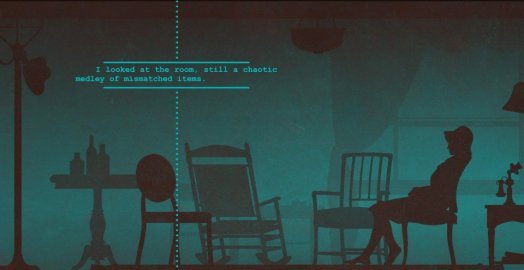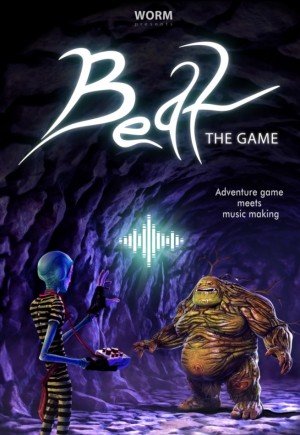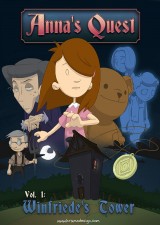Review for A Case of Distrust

1920s America. A time of Depression, prohibition, mobsters, and – if literature is to be believed – hard-boiled detectives. While policewoman-turned-private dick Phyllis C. Malone may be more scrambled than hard-boiled, A Case of Distrust does evoke the likes of Dashiell Hammet in this stylish text-based interactive murder mystery. Unfortunately, no matter what you choose or who you accuse, when the criminal is simply handed to you at the end of the day, you may well be left relating a little too closely to the protagonist as she wonders if she’s really cut out for the detective business.
You play as Malone who, tired of the politics and chauvinistic attitudes of the San Francisco Police Department, left the force to start her own investigative agency. As testified by her empty refrigerator, she has not done well in her new endeavor so far, with most of her jobs being infidelity cases from deadbeat clients. That changes when small-time bootlegger Connor Green arrives to hire Malone. He’s received a letter threatening his life and he knows the cops won’t help him.
From there you will travel to a handful of locales, each of which contains a single suspect. At every stop, gameplay is divided into two distinct modes: investigation of the scene and interrogation of the suspect. Locations are depicted using static silhouettes of various objects in different shades of the same monochromatic color. Malone’s local speakeasy, for example, is displayed in shades of red with silhouettes of the bar, the cash register, assorted liquor bottles, Malone’s favorite stool and her friend and confidant, Frankie the bartender. As each silhouette is moused over, it lights up in white to show that it can be investigated. Clicking on a silhouette provides a short paragraph of text describing the object and adds its name into Malone’s notebook.
The notebook is used for the interrogation aspect of the game. When you click on a suspect, you are taken to a close-up of the person’s face. These portraits use the same simplified silhouette style as the backgrounds, with only a few facial features like eyebrows, lips, and hair picked out in varied hues of the appropriate color. The interrogations involve extended dialog trees, with different subjects chosen from the accumulated items in your notebook.
Interrogation mode is where most of the game’s 2½ hour play time is spent. The notebook is divided into three pages: goals, evidence and statements. The goals page lists the key questions you need answered based on where you’re currently at in the mystery. Evidence lists all of the hotspots discovered in the places you’ve visited, whether they’re related to the mystery or not. Statements include any important topics that the suspects mention during conversation.
When you choose an object from your notebook, the suspect you’re talking to may engage you in a brief discussion or may claim to know nothing about that item. All conversations are displayed purely as text, with no voice option available, but the dialogs are well-written and evoke the era of film noir, laced with period slang and Frankie’s own internal monologues reminiscent of voice-overs from classic detective films. With such an emphasis on text, the occasional typo or grammatical error does tend to stand out. Sometimes the use of slang goes a little overboard, which might be authentic but can be a little hard to follow.
The first half of the game is spent investigating your client and who might be after him. In typical mystery fashion, Mr. Green has no shortage of enemies, such as his jealous wife, a rival bootlegger, and a local small-time mobster, so it’s not really surprising when he ends up dead. Having failed to protect him as she was hired to do, Malone insists on continuing with the case to discover who’s behind Green’s murder.
At this point Malone can become more forceful when interrogating suspects, as a new option to accuse them becomes available when talking to them. However, you are warned repeatedly that you should not implicate someone unless you can prove they had the means, motive, and opportunity to kill Green. Doing so without all the facts will cause them to be less helpful towards you. In theory this sounds like it should add pressure to make a correct accusation. In practice, pointing the wrong finger has no bearing on the main investigation. The suspect will simply refuse to respond to some questions that would reveal a bit of their backstory, but will always answer anything that helps progress your sleuthing.
This notion of no real consequences carries into some of the other dialog choices. At various times you are given different options that are unrelated to what’s in the notebook. For example, you may meet a suspect who remarks on how pretty Malone is and are then offered the choice to accept the compliment or tell the person off. Either selection will follow with one or two sentences specific to that option before the rest of the conversation carries on in an identical fashion. The worst-case scenario of making one decision over another is that you’ll miss out on some additional dialog or background detail that helps flesh out the world but does nothing to further the case.
The ultimate expression of your choices not amounting to anything comes when you finally piece together enough information – means, motive, and opportunity – to confront the presumed murderer. When you do, you are presented with a lengthy exposition scene in which you are told you are incorrect. Adding insult to injury, the suspect you’ve confronted then tells you who the actual murderer is. Immediately after this, you move on to the real murderer to receive another lengthy exposition scene explaining that what really happened related to events you had no way of knowing or discovering through the case. For a game focused on making you the detective, it really feels like the rug is pulled from under your feet, essentially telling you that your entire investigation was all for naught.
It’s a shame the story takes such a disappointing turn, as most everything else works really well. Along with the stylized visuals, each suspect and location has their own gentle jazz theme playing in the background. And when you discover an important clue during your investigation, a special musical riff plays that gives just that extra little thrill of accomplishment. You really feel like you’re making progress in those moments in sorting out the truth from the lies.
Attention is also paid to the small details. Malone doesn’t have a set of wheels of her own, so she always takes a cab from place to place. During these rides you can choose to talk to the cab drivers. You do a lot of driving about to confirm statements with different suspects, and yet I never once had a duplicate taxi conversation. The topics themselves seem well researched, sometimes referring to the political, social, or civic issues of the day. These conversations ultimately don’t factor into your case at all, and you can decide to go immediately to your destination without talking to the drivers, but I found most of the cabbie dialogs to be at least as interesting, if not more, than the main investigation and well worth the read.
The suspects have also been given quite a bit of thought. Each one has their own backstory and is more than just a cardboard cutout. Parts of these histories come up through your normal interrogations but some elements only emerge if you pay particular attention to the hotspots in the surroundings and ask suspects about seemingly innocent pieces of evidence that are unrelated to the case.
As for Malone herself, this is the one area where your choices can actually have an impact in shaping who she is – at least in your own mind. Malone is prone to bouts of introspection, such as when she sees an old coat that belonged to her uncle. On these occasions, dialog options will appear from which you can choose to have her reflect on her past or to ignore such thoughts and simply get on with the case. Similarly, you can opt to have Malone see herself as a liberated woman or one that regrets her choices and wishes she’d found a husband and become a homemaker. You can even decide if Malone is a law-abiding teetotaler or a Prohibition-defying drinker, as you can have her ask for a drink from nearly everyone she meets. Still, beyond the immediate text response these choices elicit, even these decisions are not remembered and don’t impact your interactions with other characters. They work only as flavor text, allowing you to decide for yourself who Malone is and how she reacts to situations and social issues of the day.
At various points during A Case of Distrust, Malone reflects on whether she made the right choice becoming a private investigator. Given that her client ends up dead, the person she accuses is innocent, and the real murderer just drops into her lap without her input, it seems her doubts are well founded. While the majority of the investigation is solid, the tone of the writing is spot-on, and the stylized visuals and smooth jazz riffs are very evocative of the period, the fact that your choices have virtually no influence over the direction of the story – punctuated by the final revelation that your efforts were basically meaningless – will likely leave most players feeling the same as the protagonist in second-guessing whether it was ultimately worth the trouble.






























